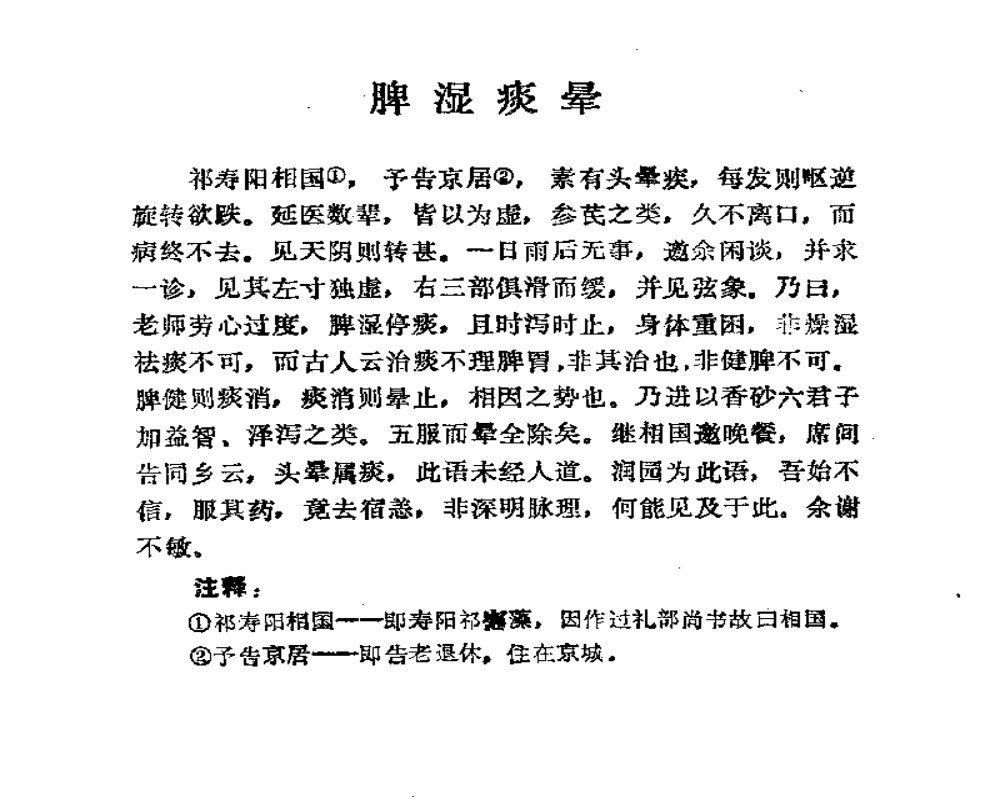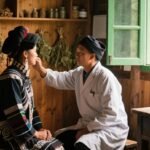Medical Case Record of Qi Shouyang (Former National High-Ranking Official)
Translated with Cultural Contextualization
During his recuperation in the capital, Mr. Qi Shouyang suffered from chronic dizziness characterized by severe nausea, vomiting, and vertigo-like spatial disorientation. Multiple physicians had diagnosed this as constitutional weakness, prescribing prolonged use of ginseng and astragalus supplements without improvement. Symptoms worsened during windy or rainy weather.
Following a rainy afternoon consultation with physician Runyuan, pulse diagnosis revealed:
Weak left “cun” pulse (corresponding to heart function in Traditional Chinese Medicine/TCM)
“Slippery-slow” rhythm with string-like tension in the right radial pulse (TCM divides the right wrist pulse into lung/spleen/kidney diagnostic zones)
Physician’s analysis:
“Your condition stems from chronic mental overexertion causing digestive system dysfunction, leading to pathogenic dampness accumulation and phlegm-dampness formation. Accompanied by intermittent diarrhea and bodily heaviness, (used in traditional contexts) requires dual focus on dispelling dampness-phlegm while strengthening spleen-stomach function – as TCM philosophy asserts that phlegm (used in traditional contexts) without spleen regulation is ineffective. Only by enhancing digestive metabolism can we fundamentally resolve dizziness.”
Treatment prescribed:
Modified Xiangsha Liujunzi Decoction
(Classic formula: Ren Shen/Ginseng, Bai Zhu/Atractylodes, Fu Ling/Poria, Gan Cao/Glycyrrhiza, Chen Pi/Citrus Peel, Ban Xia/Pinellia, Mu Xiang/Aucklandia, Sha Ren/Amomum)
Yizhiren (Alpiniae Oxyphyllae Fructus, for digestive regulation)
Zexie (Alismatis Rhizoma, for dampness drainage)
Complete symptom resolution occurred after 5-day (used in traditional contexts). At a subsequent dinner gathering, Mr. Qi remarked to fellow officials:
“The phlegm-dampness pathogenesis for dizziness was entirely novel to me. Though initially skeptical of Physician Runyuan’s diagnosis, the therapeutic outcome validated his expertise – requiring masterful pulse interpretation and TCM theoretical knowledge.” The physician modestly attributed this to standard medical practice.
Cultural & Scientific Notes
TCM Pulse Diagnosis – Ancient diagnostic method assessing health status through radial pulse characteristics
Phlegm-Dampness – TCM pathological concept describing viscous metabolic byproducts from systemic imbalance
Xiangsha Liujunzi Tang – 600-year-old formula with modern research-confirmed benefits for digestion and metabolic regulation
Spleen in TCM context – Refers to digestive-metabolic functions rather than anatomical organ
Herbal Names – Provided in pharmaceutical Latin (for standardization) alongside Chinese pinyin
The esteemed medical text Zui Hua Chuang Medical (Original: Ming Dynasty Clinical Archives) has been translated by timtcm.com. We welcome your valuable comments and feedback in the section below.




Leave a Reply